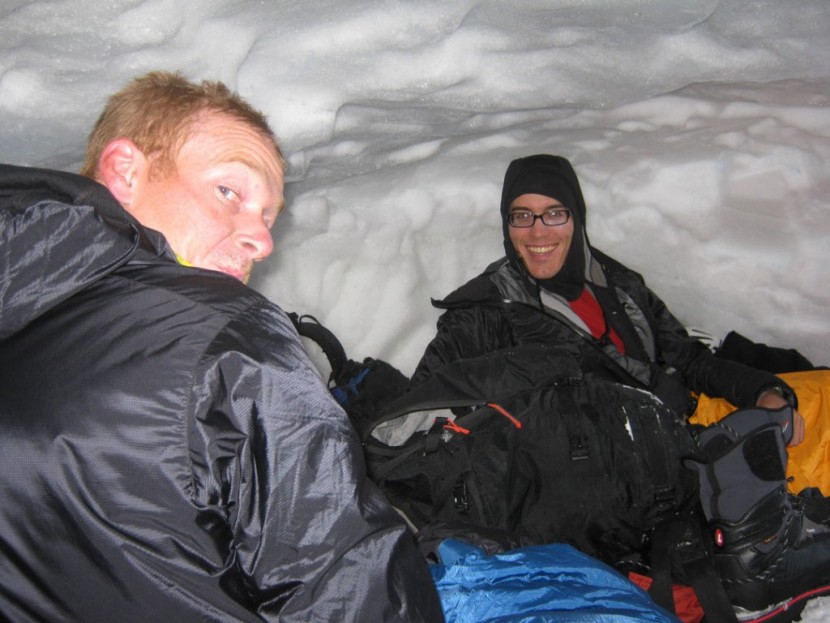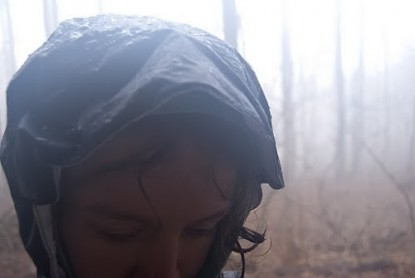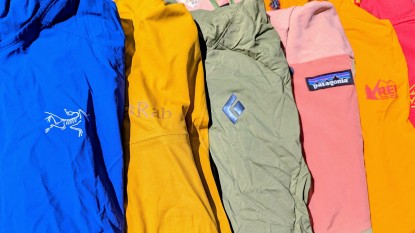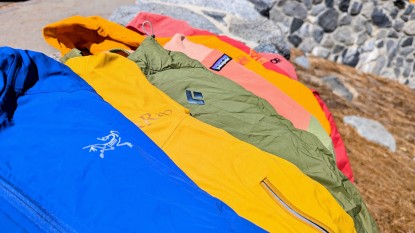The human body has a narrow safe temperature range, needing to stay within eight degrees of 98.6 degrees to function properly. Whether hiking, skiing, or climbing, when you are out there battling cold, wind, and snow on high mountain peaks, staying dry and warm becomes a chief concern.
See all the articles in this series.
Why You Get Cold in the Mountains
We've all been cold and we intuitively understand the importance of staying dry. Yet few of us understand the underlying thermodynamics of staying warm in the mountains. Who cares? Admittedly, not everyone. But, diving a bit deeper into why we get cold, and why a wind gust can leave you so chilled to the bone, can help you understand how layers can work together as a system to keep you warm. So bear with us while we examine the four horseman of the hypothermia apocalypse; the four main ways your body loses heat:
Evaporation
If you are wet, either from sweat or precipitation, the process of moisture evaporating cools you off. Evaporation is the primary cooling function of your body sweating in the first place, but in an alpine environment this can be dangerous because it can cool you off too much, too quickly in a situation where you can't get warm again. While we all have the basic sense to protect ourselves from rain, the big mistake inexperienced hikers make is ignoring how wet and dangerous their own sweat can leave them. The classic bonehead mistake is to wear that comfy cotton Bon Jovi t-shirt on a strenuous hike, soaking it with sweat from the inside out. You've now created a wet, clammy, layer next to your skin that will offer no ability to keep you warm, and invites evaporative cooling. Add a surprise afternoon windstorm and your own sweat may have put you on the road to hypothermia. If wind turns to rain as temperatures drop you may find yourself in a very dangerous situation. It is the cooling power of evaporation that motivates layering systems that wick moisture away from your body and breathe, allowing you to stay cool and relatively dry when you are working hard, and yet still insulate when you stop hiking. The best layering systems manage moisture, starting from the inside, and with an emphasis on avoiding overheating when you are working hard.
Needed: Wicking layers.
Radiation
As your metabolism churns, your body gives off heat. If too much escapes to a cold environment, it is harder to keep your core temperatures up. Most people are smart enough to bundle up in a jacket when it is cold outside, but often people forget to wear a warm hat. How can you tell where your body is losing heat through radiation? Look through an infrared camera. If you could see yourself like the alien in Predator would hunt you, you'd see most of your heat is escaping from your uncovered head, and radiation is a primary source of that heat loss. If you were naked, you'd actually lose more heat via radiation from your chest and core (where your heart and internal organs are) than from your head, but that's not typical for most people venturing outside. That's why layering systems combine a heat-trapping mid-layer with a quality hat to keep you warm.
Needed: Heat-trapping mid-layers and a warm hat.
Conduction
Your body loses heat by touching something colder than it is. This is why we use sleeping pads when camping, because they keep our body warmth near our body and don't let the heat soak into the cold ground. When you are outside, consider what parts of your body might be touching something cold. Warm socks and proper footwear are critical if the ground temperatures are cool. Ice climbers have, not surprisingly, long struggled with keeping their hands warm. But, a good pair of gloves might be also be needed to insulate you from hiking through cold rocks, or even touching your metal pots in camp. Conduction also comes into play in a cold rain, sleet or snowstorm. Each cold raindrop that lands on your skin will suck away body heat via conduction, nowhere more seriously than through your head if it is uncovered.
Needed: Warm socks, insulating layers, and a waterproof outer layer.
Convection
We've all heard of the wind chill factor, where the effective temperature is much colder due to wind: “Feels like -10F.” The reason wind-chill can be so deadly is that it combines the worst of evaporation with convection, leaving you with a double-dose of cold. Convection is the cooling from the movement of air and fluids. Convection can work on the macro-level, like when a blast of wind chills you to the bone, and it works on a micro-level next to your skin when you sweat. Convection works like this: cold air or water moves near your body, heats up, and moves away, allowing more cold air or water to reach your body again, cooling you off. Bottom line: nothing will so rapidly throw you down the path to hypothermia as wind's one-two punch of evaporation and convection. If you are trying to stay warm, you need to prevent this from happening. It's important to keep yourself dry from precipitation and protected from wind.
Needed: Wicking base layers and windproof layers.





